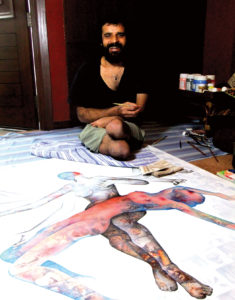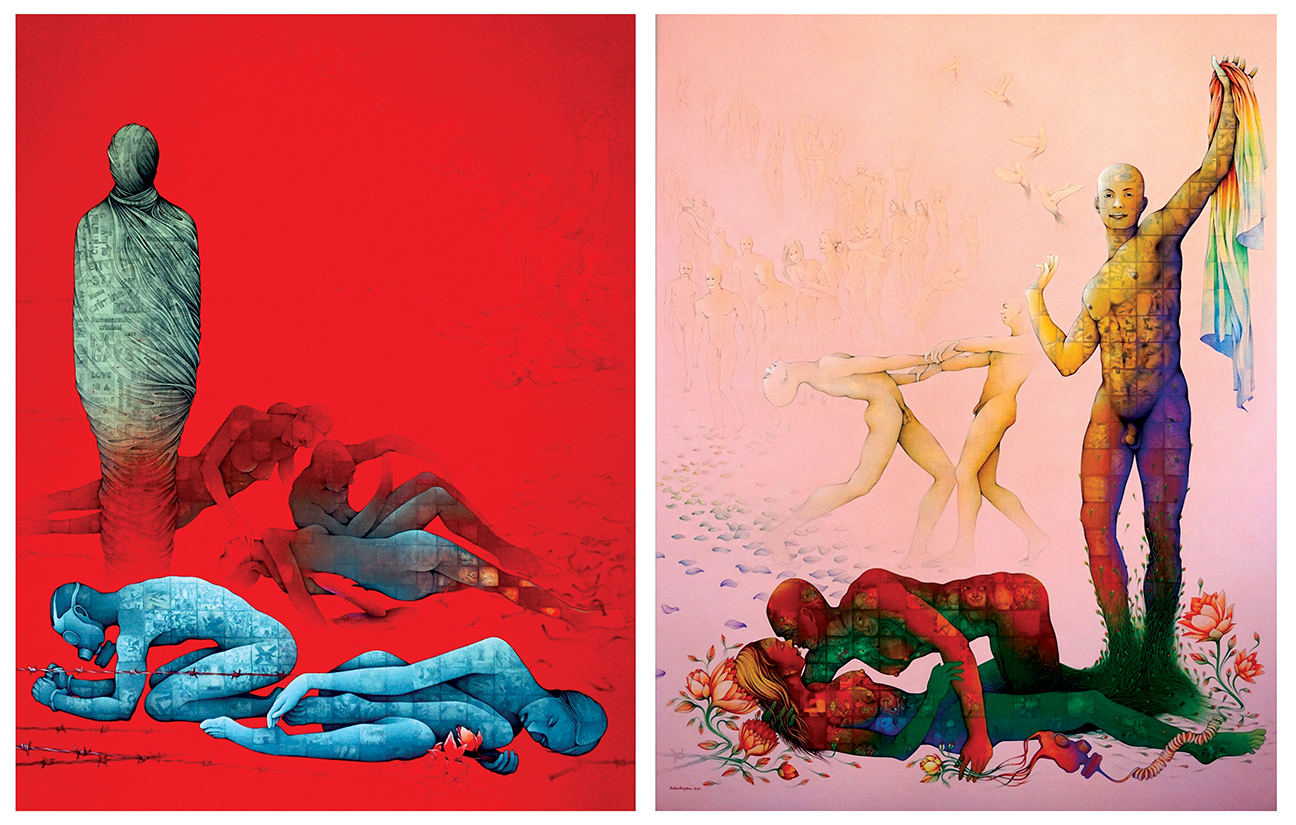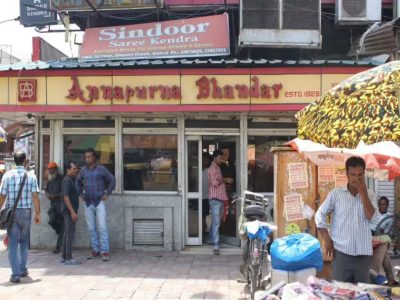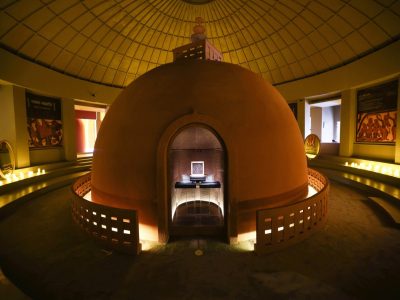The journey of artist Balbir Krishan from a small village in western Uttar Pradesh to New York is inspiring. A truly global artist from India, he’s currently showing his artwork in New Delhi, Bangkok and Detroit
ART HAS the power to transform society and is a distilled reflection of its time. It also has the power to transform lives and make ordinary people achieve exemplary feasts by way of bold artistic expression. A New York and New Delhi-based multimedia artist and queer activist, Balbir Krishan, 46, is one such example. His work is a compelling depiction of our times and include themes on race, gender, sex and sexuality, freedom, equality, love, hope, desire, pain and struggle. “My work is autobiographical, influenced by Indian mythology, human rights and social issues,” he sums up.
A new voice in the contemporary art world, Balbir, has received bouquets as well as brickbats for his work where he’s pushed the boundaries depicting the harsh realities of life by way of the human form. In 1996, Balbir’s life was disrupted by a tragic train accident, where he lost both his legs from knee down, followed by a phase of severe financial crunch. “My compelling desire to paint led me toward the light,” he puts it succinctly.

In January 2012, his thought provoking work on homosexuality titled ‘Out Here And Now’ exhibited at Delhi’s Lalit Kala Akademi was vandalised and he was attacked by a miscreant wearing a handkerchief to conceal his face—much like the recent attackers in JNU. His life journey from a small village in Uttar Pradesh to New York has been fairly eventful. He currently lives in New York with his partner Michael Giangrasso, a US citizen who was a teacher at The American Embassy School in Delhi for many years.
This week (from January 30 to February 2) Balbir’s work is being displayed in three cities around the world — namely, New Delhi (India Art Fair 2020), Bangkok and Detroit.
In the capital, Balbir’s work will be part of the overarching theme of ‘Visions in the Making 2.0’ an exhibition project by Arthub Asia and Engendered New Delhi, in collaboration with the Italian Embassy Cultural Centre, curated by Myna Mukherjee and Davide Quadrio. The endeavour is to create a space that will amplify both ‘individual’ and ‘collective’ voices and in the process try to strike a balance “between various conflicts, variegation, and fragmentation that manifest in public spaces and the potential role of art in transforming collective struggles,” describes the curator of the show. Apart from him, a host of other accomplished artists will also be participating in the event, Aamir Rabbani, Adil Kalim, Amina Ahmad, Amritah Sen, Babak Haghi to name a few.
In Bangkok, Balbir’s work will be shown in Spectrosynthesis II—Exposure of Tolerance: LGBTQ in Southeast Asia being organised by Bangkok Art and Culture Centre (BACC) and Sunpride Foundation. The exhibition is the largest-ever survey of regional contemporary art that explores lesbian, gay, bisexual, transsexual and queer creative history in Southeast Asia and beyond, and will include works of 59 artists from 15 countries.
The head of the curatorial team Chatvichai Promadhattavedi, founder and director of Sunpride Foundation has collected the compelling works of many artists to create a dialogue around the issues faced by the LGBTQ community and highlight how boundaries are shifting, social frameworks opening and established norms and values being called into question.
Balbir’s contribution to the show is a two-part work, a special commission by Sunpride Foundation for Spectrosynthesis II, entitled Before Section 377: Don’t Love, Don’t Breathe, Don’t Live, and After Section 377: Love Equally, Breathe Freely, Live Proudly. A portrayal of an allegory of life both before and after Section 377—the colonial penal code that criminalised sexual activity deemed to be against “the order of nature” including all homosexuality—in India. The depiction is not confined to the life in the subcontinent but is reflective of any society having laws that persecute people on the basis of sexual preference, and where such laws that have been repealed, a first and a necessary step toward sexual liberation.

At the Scarab Club, Detroit, in Michigan, Balbir’s series titled ‘All the Flowers Have Turned Red’ is on display. Curator Sajeev Visweswaran explains, “Division, Commonality, Encounter, brings together the work of four artists who focus on fundamental human needs and desires. This show tells a story about how people unite and divide themselves in many ways, and how struggle can form community and transform into hope, even as human beings persist in their attempts to categorize and order a disorderly world.” Apart from Balbir, the works of Alison Byrnes Rivett, Sajeev Visweswaran—also the curator—and installations of Sharmistha Kar are being displayed.
Balbir’s paintings, in the words of Visweswaran, “examine the human body, and in particular the dichotomy between the imaginations and realities of masculinity. Inspired by his own life experience as a member of the LGBT community, these paintings speak not only to the body itself, but to the universality of human sexuality, the restrictions which societies attempt to place on the expression of that sexuality, and how hope and love can spring up and unite in the face of struggle.”
Balbir doesn’t like to use the word “nudity” for it’s a “normal state of being and I’m comfortable with it,” he explains, “even when I paint death, I do it without clothes,” he adds. Though his work has often been identified with the issues of sexuality and identity, he has painted on a host of social, political and human rights issues like street children, riots, Mumbai Terror Attack and the Tsunami devastations to list a few.
After recovering from the amputation of my legs both personally and professionally, “Maine apane aap ko pachchana hai (I have recognised my own self).” A very humble man, Balbir leads a liberated life, and his art inspires others to be secure in who they are, the first step towards liberation. n





